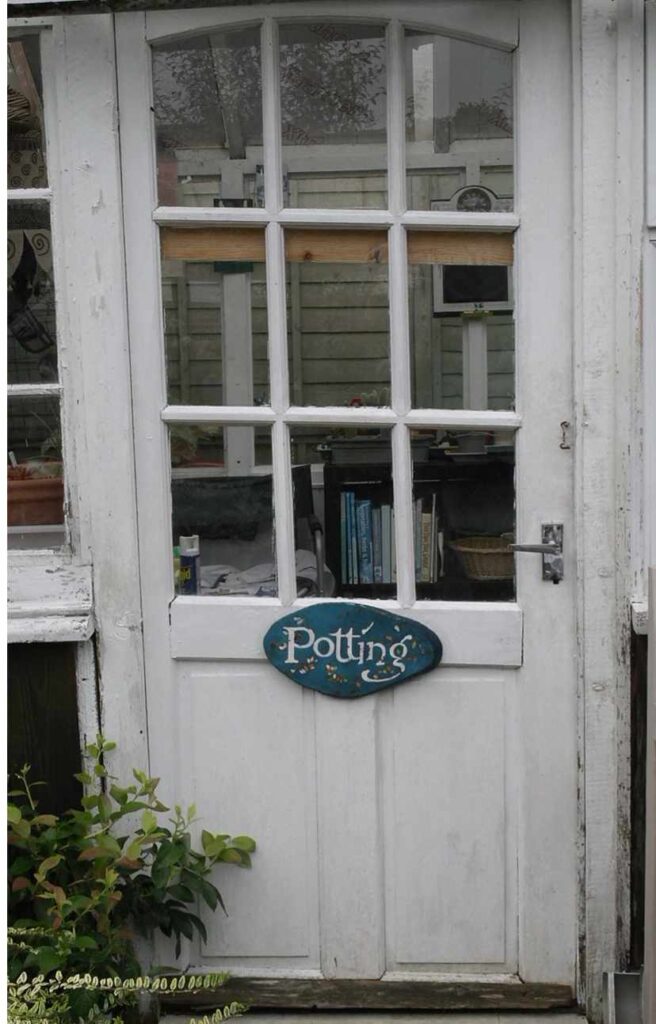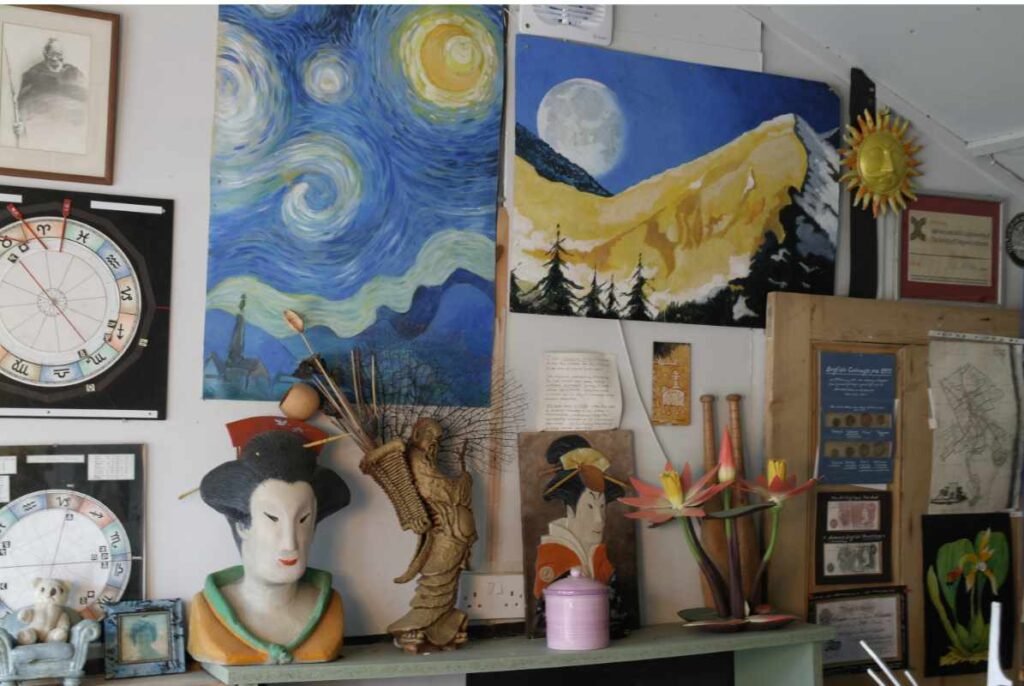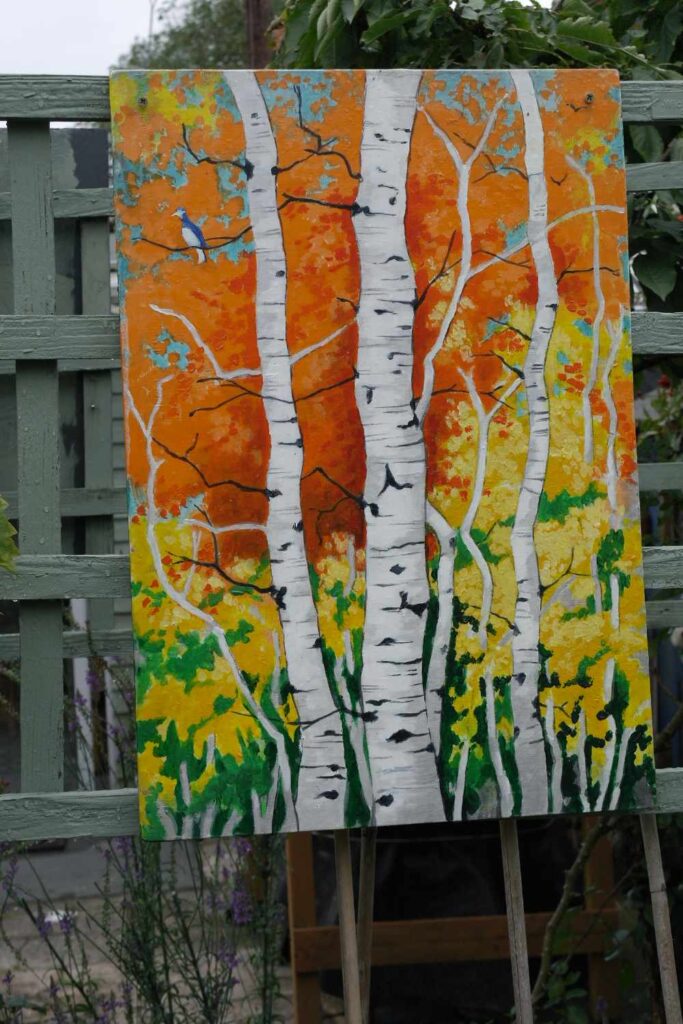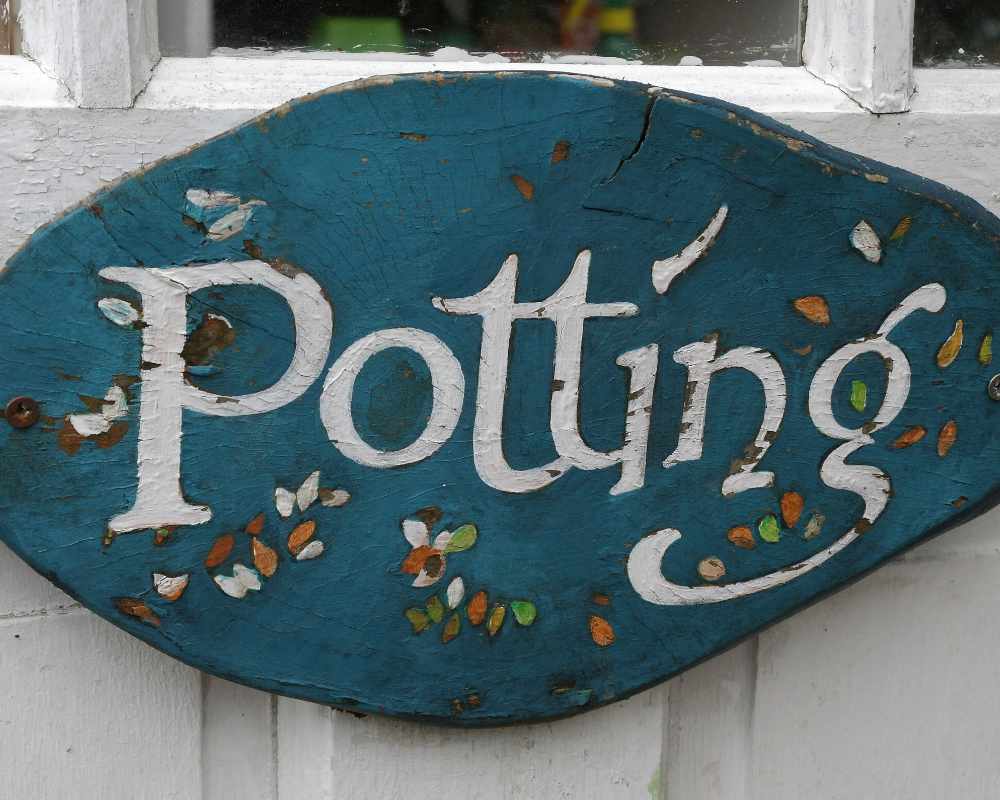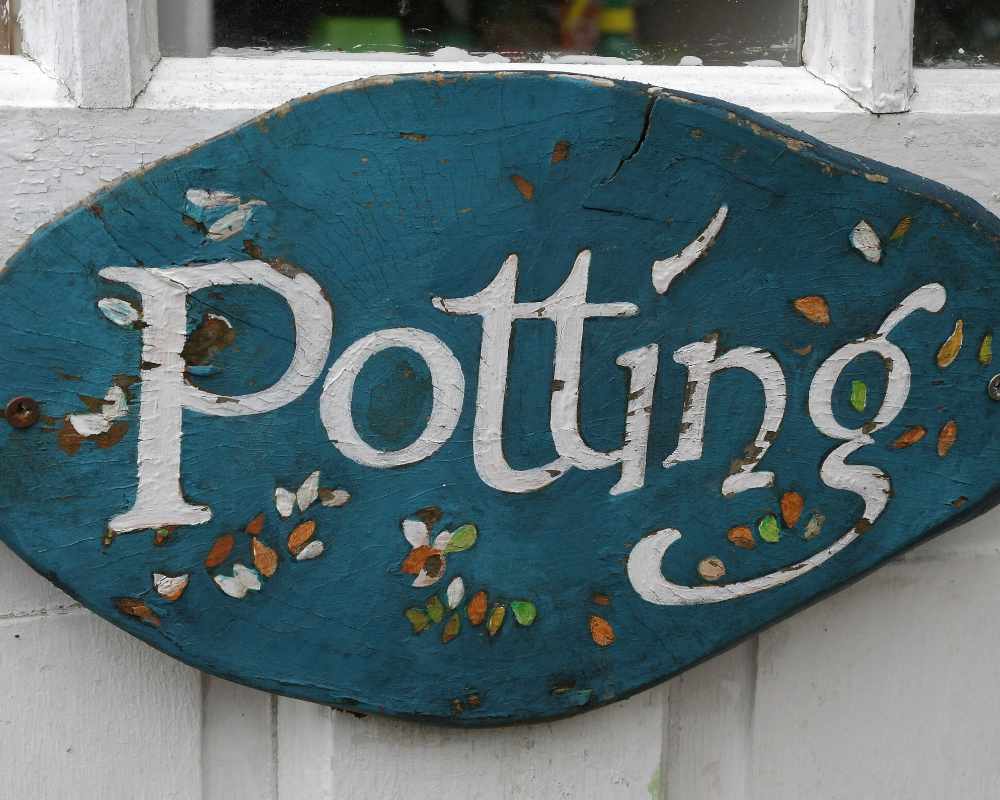It was my pleasure to meet John and Daphne Tuck one September morning in their Cleobury garden at The Hurst.
John first came to The Hurst in 1952 and lived here intermittently until 1980 when Daphne joined him. Together they tackled the derelict cottage and the wilderness of a garden, whilst earning a living. They have worked here in earnest for a good number of years so, of course, the garden we are seeing is the garden now. But with such active and interested owners, working together – Daphne does all the seed potting/planting and design, and John deals with the maintenance and heavier duty work, as well as producing new artwork, pottery and sculptures when needed, especially for their special Open Days – the garden is a wonderful space for soliloquy, for artistic vision and creation.
Not as big as some but bigger than most modern gardens, the Tucks’ is on three sides of the original 19th century, one-up-one-down, which was subsequently enlarged by the purchase of a similar adjoining cottage. The space to the side and rear was covered in nettles and brambles when they moved here and has evolved over many years to become a space of sanctuary and peace. The garden wraps around you and takes you from your busy life into a world of guided views through arbours and climbing plants to undisclosed corners giving the impression these small spaces are part of something much larger. Together with painted panels of trees standing amongst the range of flowers and climbing beans, John’s statuary of the Armless Lady, the Egyptian Mask and the Wooden Horse all combine to enhance the sense of otherworldliness.
There are numerous original wooden sheds, which are sheds no longer, being work and play spaces for adults, disguised and altered, painted and decorated, each positioned to enjoy the views across the garden and its boundaries. Even the compost bin, water butt and greenhouse have to be looked for, generally disappearing into the greenery.
Daphne’s Potting Shed – after which this series of articles is named – was started from scratch by John. The base was almost his first attempt in laying slabs and properly building and laying building blocks. The top glass sections are mostly second-hand panels acquired fortuitously, and put together to Daphne’s design.
This place is Daphne’s sanctuary, furnished with a comfy chair and rug, a radio, a light, a kettle, the stitching and the knitting, and where she is known to disappear for a few hours when she has time away from her planting and weeding, and the allotment. Really, all the comforts of home. Also, on the day of my visit, there was a splendid array of healthy seedlings to become part of a catch crop to go in the ground before the season closes in completely; tools are clean and organised, the pots clean, compost ready to use. It is always good, I feel, when, having made a mess, we can walk away, not leaving it to annoy and inconvenience others, and here we can.
John’s Art Studio is another of these wonderful repurposed structures, with light from double doors looking out onto the garden. Here there is also the chair, the rug, the light, and the walls are adorned with numerous canvasses made by John. Also to be seen are examples of his pottery and sculpture, and the ideas for the next works.
Now let me take you back to the main discussions. John gave me a list of his concepts for creating a new garden today, not only for your own enjoyment but also to surprise and delight your friends and family.
- Agree a new look garden with your partner. Look at other gardens when and where you can. Decide what appeals, and what you can manage and maintain – wild, lawn, flower borders, evergreens, trees and shrubs – (remember trees grow!).
- Set out your plan taking account of sunrise, sunset and wind direction. Analyse and establish your soil composition. Allocate spaces for the wormery, compost bin and water butt in locations most suitable for you to use.
- Agree paths through the space and the type of surface – gravel, slabs, block paving, pea resin – and allow here for slabbed areas, garden seats and parasols, decorative items such as statues, large pots, decorative displays using stones, shells. Perhaps a water fountain, a dribbler mill stone, or a pool now you have the opportunity to lay electric feed/water supply/drainage.
- Construct a rainproof shelter.
A couple of John’s other thoughts are:
- Tiny garden? Grow up boundaries with plants in pots and hanging baskets. Plant tall grasses in pots.
- Ban footfall and animal poo.
These are the big features. Having made your decisions, perhaps start by growing vegetables and flowers, something colourful and fragrant for the pollinators. Then add your fragrant and climbing flowers – sweet peas, morning glory, perfumed clematis, and possibly a climbing rose amongst the climbing runner beans. Do try to include soft fruit, tomatoes, strawberries – the garden’s bounty for you to pick and enjoy on your evening inspection tours.
John and Daphne’s garden has all of this. They really inhabit the garden; not for them looking out occasionally from the sitting room: their view seems to be one of enjoying what they have together in the garden. Would they have the same clear plan in place back in 1980 when they came together at the house? I suspect so. I hope so. It certainly surprised and delighted me.
But John has now spoiled the dream and confessed that, of course, the garden has evolved and changed over the years, as is the experience of so many of us who have resided with the same garden for a long time. But the plan is one developed through the experience and knowledge acquired orchestrating those changes and living the years here at The Hurst.
